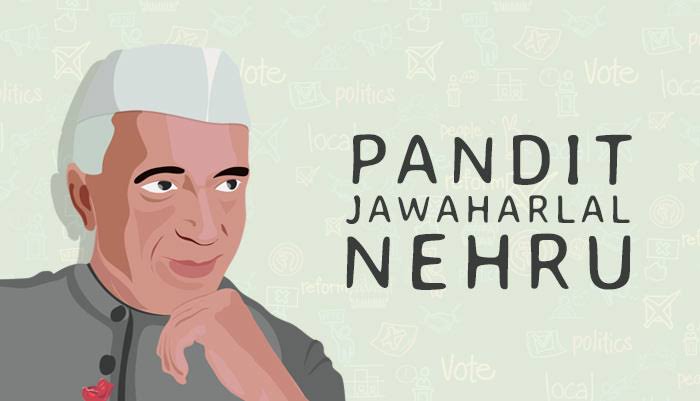Who Was Jawaharlal Nehru?
Jawaharlal Nehru joined the Indian National Congress and joined Indian Nationalist leader Mahatma Gandhi’s independence movement. In 1947, Pakistan was created as a new, independent country for Muslims. The British withdrew and Nehru became independent India’s first prime minister.
Early Life
Nehru was born in Allahabad, India in 1889. His father was a renowned lawyer and one of Mahatma Gandhi’s notable lieutenants. A series of English governesses and tutors educated Nehru at home until he was 16. He continued his education in England, first at the Harrow School and then at Trinity College, Cambridge, where he earned an honors degree in natural science. He later studied law at the Inner Temple in London before returning home to India in 1912 and practicing law for several years. Four years later, Nehru married Kamala Kaul; their only child, Indira Priyadarshini, was born in 1917. Like her father, Indira would later serve as prime minister of India under her married name: Indira Gandhi. A family of high achievers, one of Nehru’s sisters, Vijaya Lakshmi Pandit, later became the first woman president of the UN General Assembly.
Jawaharlal Nehru: Quick Facts
Born on: 14 November, 1889
Place of Birth: Allahabad, Uttar Pradesh, India
Father’s Name: Motilal Nehru
Mother’s Name: Swarup Rani Nehru
Spouse: Kamala Nehru
Children: Indira Gandhi
Education: Harrow school, London; Trinity College, Cambridge; Inns of Court School of Law, London
Occupation: Barrister, Writer and Politician
Political party: Indian National Congress
Political Ideology: Nationalism, Socialism, Democracy
Award: Bharat Ratna
Publications/Works: The Discovery of India, Glimpses of World History, Jawaharlal Nehru’s Autobiography, Letters from a Father to his Daughter, etc.
Died: 27 May 1964
Place of Death: New Delhi
Cause of Death: Heat attack
Memorial: Shantivan, New Delhi
Jawaharlal Nehru: Political Journey
– He attended the Bankipore Congress as a delegate in 1912.
– In 1919, he became the Secretary of the Home Rule League, Allahabad.
– In 1916, first time he met with Mahatma Gandhi and was immensely inspired by him.
– In 1920, he organised the first Kisan March in Pratapgarh district of Uttar Pradesh.
– Due to the Non-Cooperation Movement (1920-22), he was imprisoned twice.
– In September 1923, he became the General Secretary of the All India Congress Committee.
– In 1926, he toured Italy, Switzerland, England, Belgium, Germany, and Russia.
– As an official delegate of the Indian National Congress, he had attended the Congress of oppressed Nationalities in Brussels in Belgium.
– In 1927, he attended the tenth-anniversary celebrations of the October Socialist Revolution in Moscow.
– During the Simon Commission in 1928, he was lathi-charged in Lucknow.
– He attended the All-Party Congress on 29 August 1928 and was one of the signatories to the Nehru Report on Indian Constitutional Reform that was named after his father Shri Motilal Nehru.
– In 1928, he founded the ‘Independence for India League’ and became its General Secretary.
– He was elected the President of the Lahore Session of the Indian National Congress in 1929. In this session only, the complete goal for independence of the country was adopted.
– During 1930-35, he was imprisoned several times, due to the connection with Salt Satyagraha and other movements launched by the Congress.
– On 14 February, 1935, he had completed his ‘Autobiography’ in Almora Jail.
– After release from jail, he went to Switzerland to see his ailing wife.
– He was again arrested for offering an individual Satyagraha on 31 October, 1940 to protest against India’s forced participation in the war.
– In December 1941, he was released from jail.
– At the ‘All India Congress Committee’ session in Bombay on 7 August, 1942, Pt. Jawaharlal Nehru moved the ‘Quit India’ resolution.
– He was arrested with other leaders on 8 August, 1942 and taken to Ahmednagar Fort. This was the longest and his last detention.
– He was released from Jail in January 1945 and organised a legal defence for officers and men of the INA charged with treason.
– In July, 1946, for the fourth time, he was elected as the President of the Congress and again for three more terms from 1951 to 1954.
In this way, he became the first Prime Minister of independent India. He was the first Prime Minister to hoist the national flag and make his iconic speech “Tryst with Destiny” from the ramparts of the Lal Quilla (Red Fort).
Major works of Jawaharlal Nehru after becoming the Prime Minister of India
– He imparted modern values and thought.
– He insisted on the secular and liberalist approach.
– He focused on the basic unity of India.
– He advocated democratic socialism and encouraged India’s industrialisation by implementing the first five-year plans in 1951.
– Promoted scientific and technological advancements by establishing higher learning.
– Also, instituted various social reforms like free public education, free meals for Indian children, legal rights for women including the ability to inherit property, divorce their husbands, laws to prohibit discrimination based on caste, etc.
Jawaharlal Nehru: Legacy
He believed in pluralism, socialism, liberalism, and democracy. He had an immense love for children and so, his birthday is celebrated as Children’s Day in India. He supported and generated a way for India’s education by envisioning the top tier institutions of India including the Indian Institute of Technology, All India Institute of Medical Sciences and India’s first Space Program etc.
In fact, Shyam Benegal created a TV series “Bharat Ek Khoj” that was based on Jawaharlal Nehru’s famous book, Discovery of India. In Richard Attenborough’s biopic ‘Gandhi’ and Ketan Mehta’s ‘Sardar’, Jawaharlal Nehru was featured as a prominent character.
Jawaharlal Nehru: Death
On 24 May 1964, he died due to a heart attack. He was cremated at the Shantivan on the banks of the Yamuna River in Delhi.
